Similar Posts
Writing this text, I can’t help but feel that it opens up (or continues) a very extensive subject, which will require a lot of effort just to be introduced, and even more effort to be explained, but I will try…
On February 12th, 2024 I was invited to the Andrey Rublev Museum in Moscow as a co-speaker at a seminar called “Actual Questions of Iconography”. Ours was the third in the series; the first one featured Archpriest Alexander Saltykov together with Fr. Nikolay Chernyshev and the second one featured Alexander Soldatov. For me this experience was extremely special and awakened several thoughts which I think are worth sharing here.
Inviting me to the seminar half a year ago, the Andrey Rublev Museum curator told me that the whole event was going to be undertaken because “for iconographers of a new generation, Theology of the Icon, written by Uspensky always looks more and more outdated, so we need to create a new theology for liturgical images.”
Her point intrigued me, and I began thinking about these words. I was wondering who at present would dare to start such an extensive and responsible mission? I began pulling my thoughts together, and I was glad I did because, at the end, the seminar appeared to have a totally different goal – though I only discovered this later…
On the 12th of February Archdeacon Alexey Trunin (who studied for 15 years with Adolf Ovchinnikov) and I entered the Seminar room and sat, ready for anything and everything.
Before I move on speaking about the seminar, I need to mention that what was going to happen was not a secret to us. We knew the situation because we had watched the previous two seminars. We knew what our seminar was going to be like, but at that moment we did not know the main point. Very soon it was made clear: what the curator originally called “The New Theology of Icon” appeared to be the personal point of view of Archpriest Alexander Saltykov – who is known to hold the dean’s position at St. Tikhon’s Institute and has been head of the Educational Department at the Andrey Rublev Museum for several decades. He is also known for holding that iconographers should only take models from Andrey Rublev and the other most famous artists, because provincial iconography is not decent enough for reproduction.
The seminar began as an interrogation and I will quote here several questions, almost literally translated from Russian:
- What do you mean by the “Canon of Iconography”?
- With a traditional approach to iconography, we are used to thinking that icons should be based on three principles: 1) It must be created for prayer; 2) It has to reveal the meaning of the Liturgy, and to be made as an inner part of the celebration, it has to correlate with the texts; 3) It has to be canonical and contain in itself the universal catholic church experience.
According to you, in order to be a true witness to God, do icons have to obey the listed above principles, or different ones? - Are Christian icons created for prayer, or not?
- You are painting in a specific style – is this style canonical?
- Why do you and some other iconographers bring contemporary elements to your icons? We know that icons must only reflect eternity – mustn’t they?
- You are saying that style is secondary. Does it mean that academic religious images can be called icons? Do you mean that their meaning is identical to the meaning of real icons?”
- What is the difference between an icon and a picture?
- We are accustomed to the fact that the icon does not depict overt psychological experiences and obvious emotions (except, perhaps, passionate subjects). Nowadays you can often hear the opinion that an icon should take a step towards a living person – show simple sincerity, reach the heart, awaken not fear, but a touching smile. What do you think of it?
- The tendency to depict the world through a pure child’s gaze, the world through the eyes of children – do you not agree that by choosing such a primitive style, the artist immediately abandons a whole layer of spiritual meanings, which are not all expressible in the primitive style?
- How free is the icon painter in his search? Should an icon painter reflect his time? Where are the limits of what is permitted?
The questions looked like someone had crafted them very carefully, but they all (or almost all) were based on a wrong concept which I can now finally start discussing with you. To introduce you to the context, I need to say that all these questions clearly had a very specific purpose. By asking these questions of Archdeacon Alexey (whose several recent murals were destroyed), the seminar curator was asking all those who don’t aim to produce nice copies of prototypes. Behind all these questions we read: ”How dare you be different?” It was clear that we were the “bad guys” who were expected to get scared and repent, but we did not.
And here I want to extend my short article to actually invite fellow iconographers to think, if these questions seem to them right or wrong and why?
Watching the two previous sessions (which are only available on the Russian analogue of YouTube, see links below) we discovered how the situation is seen from the other side. We saw that for archpriest Alexander Saltykov and for many other people, both in church and outside, icons are considered equivalents to their verbal interpretations, and that they should be defined (and controlled) with words.
All this reminded me of some texts of the iconoclasm period, which I recently read while preparing my Theology of Icons course. Several independent scholars testified that one of the main reasons why iconoclasm got so popular was exactly the desire to tame religious art. Church authorities began to worry that, unlike texts of dogmas, images of Christ and the saints could not be enclosed in theological definitions and subject to rules. At the time there seemed to be no means for controlling images, so some people preferred to simply ban them.
Let’s get back to the main subject: why do I think that this seminar was useful and there may be some profit for all of us?
I simply feel that the seminar curator was right, even though originally, she was wrong. What she wanted was not a New Theology at all, but the questions she asked were the ones we hear most often. For me this seminar just disclosed the most classical stereotypes – too clear and too evident to be neglected.
My co-speaker, deacon Alexey Trunin, and I, both tried to answer these questions (you can watch the video version – it has English subtitles), but when the seminar was over, I felt really captivated and continued thinking about it. After asking advice from Irina Yazykova, together we decided that the best thing would be to have these questions answered by the most serious Russian liturgical artists of the older generation. Soon we will prepare a series of zoom meetings to accomplish this mission.
In this text I just want to share my immediate point: Why will any direct and honest answers to these questions not work?
I think that the main problem is that these questions are asked with only one intention: to check if practice obeys the theory… “The Theory“.
It is worth remembering this: Even though many people consider iconography a “canonical” art, for some reason there is really no actual canon – which would in a written form regulate the artistic qualities of liturgical images. Apart from the Councils, some of which had specific rulings about the icons (like the one, held in Russia in 1551, which forbade the representation of God the Father because nobody has ever seen Him), there are no official documents, which would tell artists how exactly to write (or paint) the icons and how not to write (or paint).
Looking at the situation in light of this thesis – an absolute lack of official theological rulings for iconographers – I am amazed to see how thoughts and texts of Leonidas Uspensky and Fr. Pavel Florensky for many people took the place of official regulations and “canons”. Furthermore, works of these brilliant theologians were memorized as formulas, allowing anyone with no or very little practical experience in the field of liturgical art to decide which images are good, and which are not – and have to be eliminated and destroyed. I taught iconography for almost 20 years, and the first thing I try to teach is appreciation for ALL the works of our predecessors. Reading Uspensky and other authors is great, however, our reading should enrich our experience, structure our knowledge, and train our perception. But we should never use our knowledge to deprecate any old icon or fresco because it does not fit our stereotypes. They were created in totally different conditions by people so very different from us that we have no right to judge or condemn them.
However, questions similar to the ones I quoted above are being asked constantly, you can hear them from kids in a Sunday school, from parish priests and from bishops, from church writers, and of course from fellow iconographers. My favorite one is of course about “canonicity”, and the second one is about “style”. I even think we can say that these questions reveal a theology of the icon in the Orthodox Church of our time.
Now every icon school teaches its own system of values, but even most advanced schools teach iconography as a sacred craft. Iconography was step by step transformed into an icon-o-logy, – a domain of people, who write, read and speak about icons, without actually seeing them. These people see subjects and styles, for almost every detail they invent an explanation, but with this approach iconography stops being a form of visual art. After losing its artistic genesis, iconography turns into a container of mysterious (encrypted) knowledge which some people can so beautifully decrypt in their articles, lectures and books. Colors, shapes, proportions – and other similar visual tools which for the old masters were the main instruments – interpreters neglect as irrelevant, as they cannot be defined in words or interpreted.
How can we bridge this gap? I think the only way is to train our eyes. I can testify that I personally began my road in iconography from very strict rules and methods which seemingly guaranteed me safety and good results even with no artistic skills involved. Yet, step by step after several years of studies, I began seeing that since icons are images, they have to work in the visual field first. If my icon is not working well as an image, it cannot become a good tool for prayer even if I fill it with symbols or secret signs.

Online Iconography Conference by George Kordis, Coman Mihai, Todor Mitrovic, Philip Davydov
And yet, I have actually no intention to criticize anyone. Similar thoughts and questions have already been faced at Online Iconography Conferences in COVID times. We talked with George Kordis, Todor Mitrovic, Fr. Silouan Justiniano, and Mihai Coman via ZOOM when we all had to stay in our homes. These videos are still on YouTube (see links below), so, you can see that it’s not the first time that these professional issues were brought forward and discussed in public. I just thought that the seminar and its questions could be a nice reason to return to our conversations and to speak a little more about the issues we all face.
Sometimes I think that maybe the process of conceptualization of iconography is just a fruit of our general visual cultural decay. Could not it be that iconography, as any contemporary visual art, is now perceived as a fruit of conceptual, rather than artistic production? I am not sure. However, I think here we are in the same situation, which so many people relate to – speaking about contemporary art when they say that it’s lacking beauty. In our case beauty is not a requirement for an icon to look accurate or lovely, but to be originally conceived and accomplished as an artwork, because otherwise it can no longer be convincing or appealing.
Please, share your thoughts below, and if you are interested in continuing this discussion, I also will be happy to. If your questions are different from what I have shared above, please, share them, and I will ask them of the most respected liturgical artists of Russia. And I also promise to share with you the answers in the form of interviews via Zoom.
This text was kindly reviewed and edited by Valentina Knap and Andrew Gould.
LINKS TO THE VIDEOS
- Video with Archdeacon Alexey Trunin and Philip Davydov: https://youtu.be/EG55OPxp76w?si=Q6h5wYYfAG3xnkWg
- Videos of all Iconography seminars at Andrey Rublev Museum RUTUBE channel: https://rutube.ru/plst/360891/
- Online Iconography Conferences with George Kordis, Todor Mitrovic, Mihai Coman and Fr Silouan Justiniano: https://www.youtube.com/playlist?list=PL21rrGCUPyUQ_Oq9orlLz8Og182KNK9Oj
If you enjoyed this article, please use the PayPal button below to donate to support the work of the Orthodox Arts Journal. The costs to maintain the website are considerable.

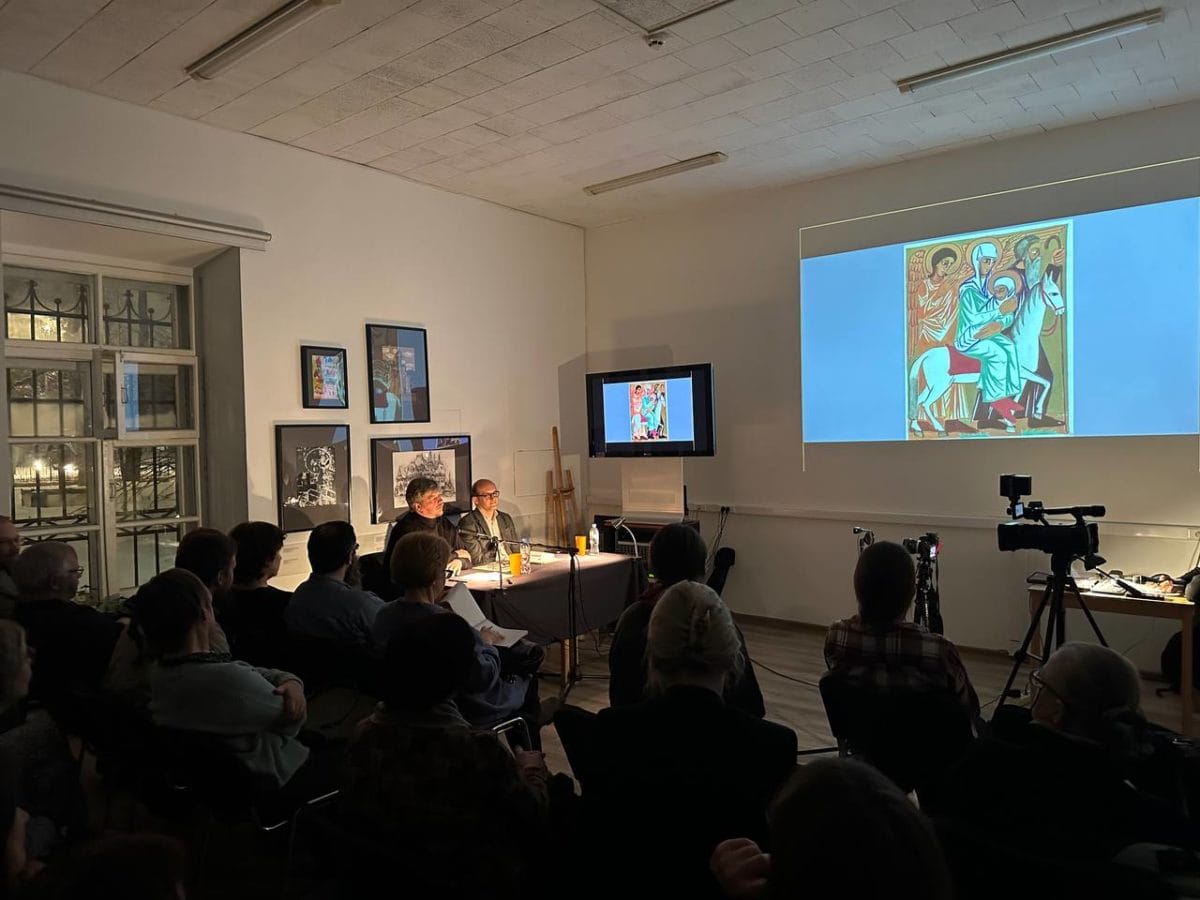
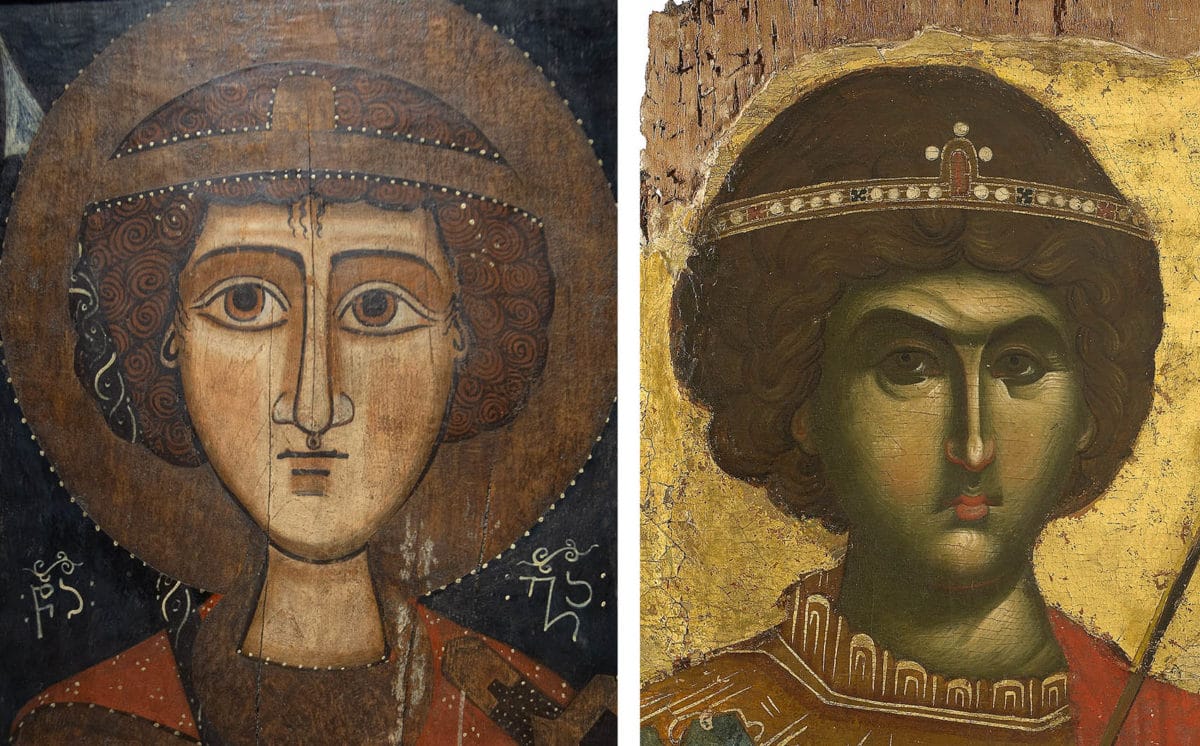
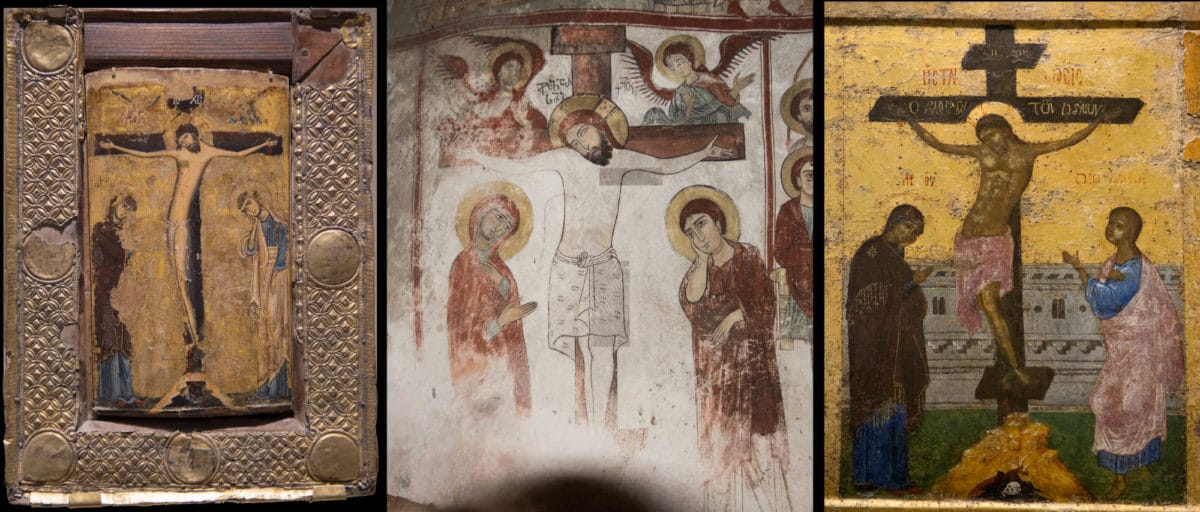
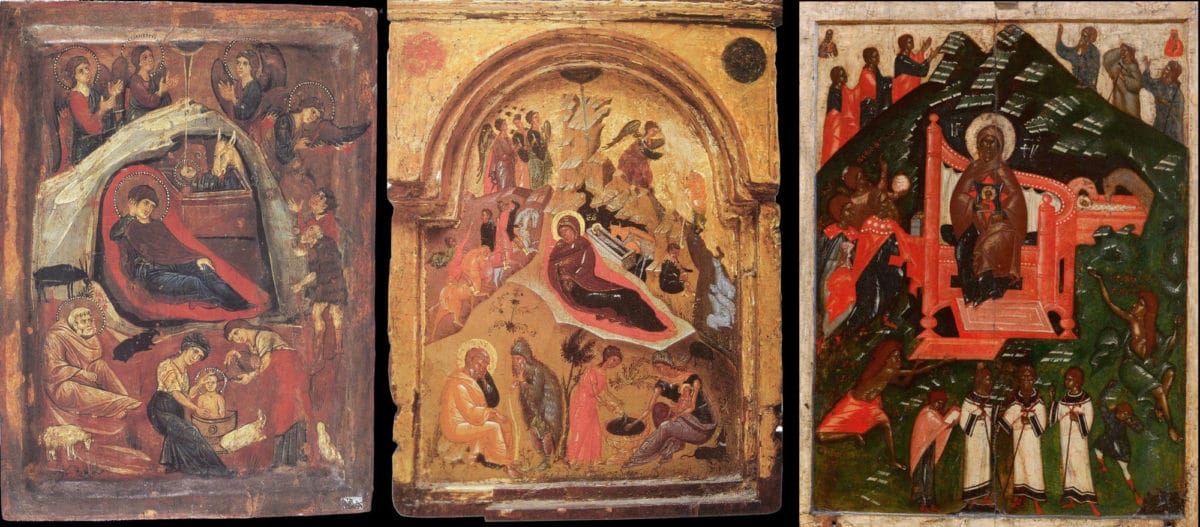
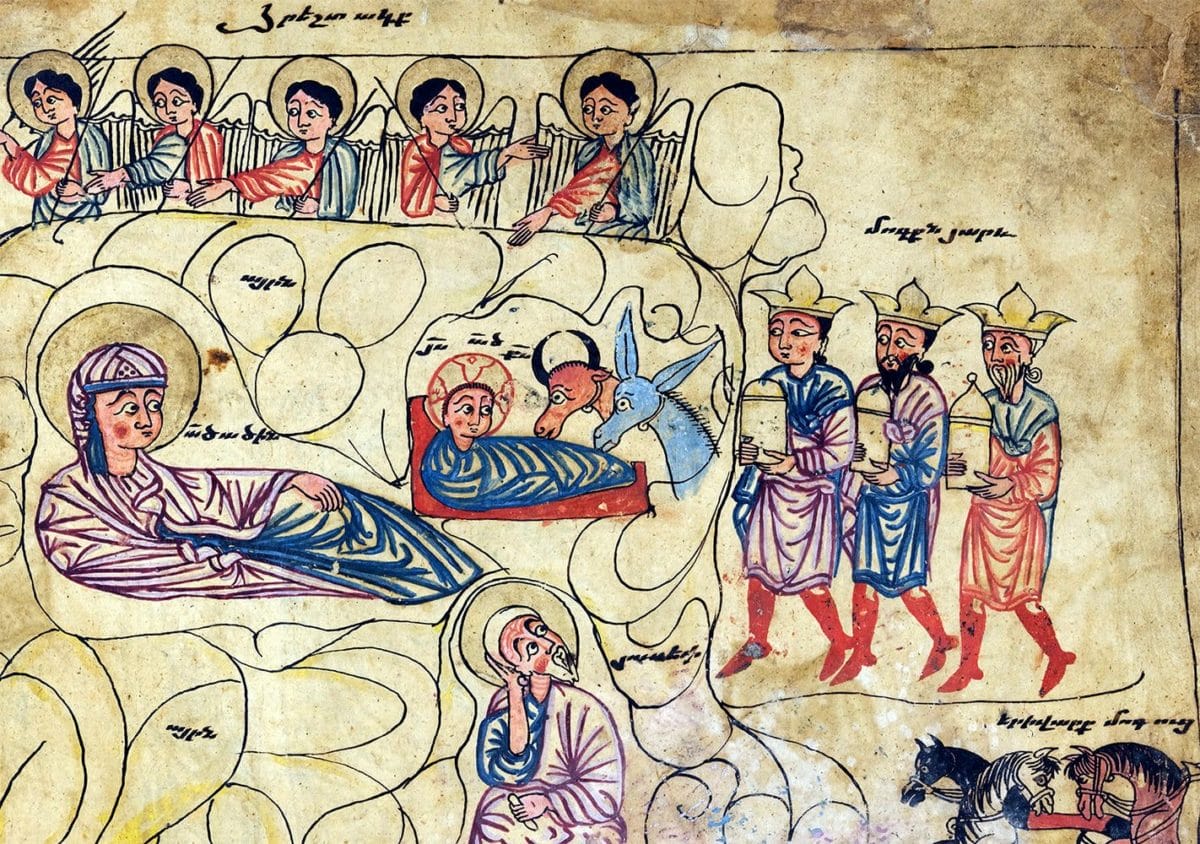
“Sometimes I think that maybe the process of conceptualization of iconography is just a fruit of our general visual cultural decay.” I think that you hit the nail on the head. Culture, not just within the Orthodox world, but also throughout the world, has decayed to such a degree that what was considered obvious one hundred years ago (and even more) has been called into question. People took for granted and as obvious the purpose of so many things: marriage, family, art, etc. Now, as these bulwarks of society and culture are being dismantled, it is necessary to articulate their purpose. I wonder if the same thing is happening in the world of iconography–contemporary generations are seeking to articulate the answers to questions that were so obvious to iconographers of the past that they did not need to articulate the answers. In this way, perhaps the question of “canons” or “styles” are only pointing to the heart of the matter, which is not canons or styles, but rather something to do with the culture at large. What is missing in the culture at large that would prompt people to want to grasp so tightly to rigid canons and styles? What shift has taken place that people need rigid rules, systems, and schools to make sense of an art form that has existed for centuries? Maybe the answer to these questions can get to the heart of the matter and to the heart of aspiring iconographers….
I highlight the issue of culture, which I think is rightly mentioned in the reflection above, because these trends to try to make sense of things that were obvious in the past, are occurring even outside of the world of iconography. Young people in, for example, the Catholic tradition are turning to the Traditional Mass because they find meaning, purpose, and beauty in it. Mainstream Protestants are seeking less Bible-based entertaining Sunday services and opting for rite-based services. So in the culture at large there is a kind of grasping for sense and meaning in older rites and forms as the culture decays. Maybe this is what is also occurring when iconographers are attaching themselves to schools and systems–they are striving to seek stability in a constantly-changing world and decaying globalized “culture.”
Dear Erka, exactly!
“they did not need to articulate the answers.”- You named what I feel the liturgical artists used to be like while now all we want is “rules”and “canons”….. Why we need them so much?? To prove that what we are doing is good? Or to punish those, who disagrees with us and who does not share our understanding of “canons”?? Sometimes it’s both…
Thank you for sharing your thoughts!
Perhaps we should consider this idea of canon in the context of other forms of art – forms which are more current in modern culture. For instance, filmmaking – which is the most complex and expensive form of art in our culture -akin to cathedral building of old. Film critics often speak of the canon of films – meaning the films of the past that are good enough to still remember, and which help define the classic genres. So how do contemporary filmmakers relate to the canon? Sometimes they treat it as a framework of rules to imitate. Directors still sometimes try to make a “classic western”, for instance – following all the expected conventions of that genre. But other times, directors try to make a movie like nothing anyone has ever seen – something wildly fresh and unexpected. Both efforts are celebrated by the critics and the box office. Either type of film might win an Oscar. Perhaps this tells us something about the natural relationship between artists and the canon. The cannon is a solid and reliable example for those who wish to conform to it. But it’s also something artists are called to surpass – so that the canon can grow larger.
It seems that some iconographers (including myself) prefer to copy old icons and not come up with any new ideas. It is reasonable, safe and can be done masterfully. Other iconographers (like yourself) are granted inspiration to create new expression of the truth. It is beautiful and is very important part of spiritual life. Neither group can tell the other what to do and what not to do.
This was exactly the feeling I had. Listening to Fr Alexander Saltykov and the moderator I met people, who not only had a certain vision, but insisted on turning this vision into a rule. So I shared these questions – to show that they only reveal one side of the situation..
Grazie per la condivisione estremamente attuale.
Io mi domando ancora: dietro il nostro dipingere c’è una ricerca spirituale?
Un amore reale per Dio e un servizio alla verità?
Il nostro sguardo è uno sguardo purificato?
Cara Suor Elena,
Noi tutti siamo esseri umani che vivono su terra. Ognuno secondo la propria fede e secondo le capacita e circostanze cerca a seguire il Signore. Com’é stato detto nel’Vangelo, la testimonianza si prende dal risultato, non dalle parole. Se cerchiamo solo il bene (e cerchiamo a servire la verità nell’amore di Dio), ma non sono capaci di realizzare queste cose, si vede nelle nostre opere. Se cerchiamo altre cose si vede anche questo.
Sopratutto diventa chiaro quando si mette accanto il nostro modello ed il nostro lavoro. Quali erano loro scopi? Quali sono i nostri? Qual’e la differenza principale tra quello, che messaggio trasmette il mio modello e quello, che trasmette la mia opera? Perché in realtà nell’arte figurativa si vede sempre le intenzioni e gli scopi.
Thank you for this article!
Just a clarifying question: Fr George Florovsky or Fr Pavel Florensky? The above text saves Fr George Florensky.
Oh, so sorry for the confusion. Of course Fr Pavel Florensky.
Good morning/ afternoon to all.
If I may allow myself a rapid fire of ideas.
I see that the way Liturgical art is manifested concretely in a particular form has to do with a world view (perhaps the “way one lives in the world”). Ideas emerge from practices – not vice versa. In another words, attempting to conceptualize/articulate, prior to embodying. One can think of being enamored with a subject/ thing, learning about it, watching unending sequence of digital content about it, but never actually doing the thing nor becoming a practitioner/ participant in the subject.
Which leads me, if a conception of a Christian life is tied directly with an adherence to rigid set of rules/ ordinances/ concepts that mut be followed, then it’s seeming inevitable that the same will be in the realm of visual representation.
The persistent attempt to codify all conceptualization/ rules/ cannons, at least in my small view, seems to be a very particular issue, of accounting for all deviations. Perhaps “removing the remainder” in the desire to keep the realm of Christian visual representation pristine/ pure/ unaltered – neither of which has been the goal or the case throughout the history of Christian art.
I believe a good portion of this is tied very closely to the “proverbial soup” of Post Reformed Christianity and its influence on the current world (willingly or not). On the other hand, I do see that this polemic in large part is related to the situation Russia is in – which i don’t think can be overlooked. We are dealing with a discourse happening at very particular place, at a particular time with very particular history. I’m aware that these topics are on the minds of many (international) iconographers (or people interested in looking/ discussing iconography or related ideas) – all is made more complex that we get to have this “digital discourse” across many contexts and nuances that get flattened when the discussion is had by many who if I may quote “… those who write, read and speak about icons, without actually seeing them”. The context of the country that only recently (with in last 100 years) had undergone a very intense period of iconoclasm/ persecution and swift attempt to return to it’s Religious & National identity – the issue that i believe is currently still being addressed considering Modern experience. I believe that the current discussions streaming out of Russia on this topic are still an ongoing attempt to appropriate the legacy and history of Russian people, considering its self-Identity and its Hagiographical role (a bit obscure of a point, but non the less). I do not think that a presented standard of Rublev’s 14-15th century images is accidental, as it manifested itself, at the time of Russians (particular) Eschatological vision – from the ideas that saw Russia as the last Christian empire, the instrument of Gods justice and even saw their role as pivotal in Christs impending coming. This last point is a bit of an obscure tangent, but non the less is part of Russian History.
I see iconography and Liturgical art at large as means of “capturing one’s attention” properly (improper ways of getting attention can be thought of as shock, taboo, or grotesque mans). We can see that through transfiguration of Romanesque/ Pagan forms into Liturgical imagistic language – Christ truly did fill all things to their fullness.
The way forward in my case, as I’m wanting to participate in the development and participation in the Liturgical art, is to learn/ acquire the skills necessary & to begin to implement them in a particular place where I live, with particular people that are around me, with influence of its specific materiality, geography and previous native art and needs of the Church and its people. I can’t create in a vacuum, as I live in the real world, that manifest itself in very particular ways.
I’m inspired when is see such variety produced by our predecessors, and my hope is that we do not neglect that these truly are “living images” – which means they must have a life, not copy or a mimic of someone else life. For to know how to mimic a life, one must know how it was lived.
I pray I will learn to live, so that what is made by me, can live too.
Thank you, Mark! Yes, I share everything you are saying, and agree with all your points… For me it’s hard to see as something happening somewhere… But seeing this process from inside I see it too much as renewal of Stalin times in many aspects of life in Russia, including liturgical art… And I see it as a danger, as a reason for sadness and a reason to make an effort to speak about wideness and variety of horizons… Yet, I do “hear” these tendencies in words of fellow iconographers in different countries, especially in words of priests and bishops who like to explain icons…
Besides, it’s a part of my own path, – I feel that I start seeing more and more and sense a desire to share this admiration of power of the visual language, gaining more and more allergy on words of people, who “explain” art…
If I may comment a bit further, indulging my own observations,
In relationship to the cited series of lectures/ presentations – i found them very trudging to listen to, as the approach was rather forward and polemically hostile to the artist from the side of the moderator. (specifically in lectures 2 & 3) Borderline demanding an explanation or justification for artists decisions. I found it ironic that it was done in such a way without understanding that the final product was guided by real problems that the artist had to address to make the image work with its environment. For my sense, the second lecture by Alexander Soldatov, he attempted and communicated very clearly how the environment, materiality and place itself had to be in a living relationship with what he produced – guiding his decision making.
From the approach taken by the moderator, I got very similar sense, when one reads modern Biblical scholarship that whether knowingly or not is dispensing judgment from its evolved/ final stage looking down upon the primitive views of the past. Returning to my previous point of almost, an odd desire to state or infer that – 15th century Russia is a pinacol of all Church iconography & its future variants will only be successful if one is willing to copy/ submit to provided model.
This is my personal view; but I find that approach alienating as it turns the relationship between people engaging in discourse into a battlefield of prevailing and defeated ideas.
I hope to see your work pay dividends as you deal with these questions a lot more closely and directly.
I’m looking forward to hearing the perspective and the approach of the mentioned respected liturgical Artist of our time & to gain their wisdom.
Thank you for your continuous labor.
Some thoughts as to basics:
An icon should follow simple standards. It must be readable to the people who view it, and should inspire, remembering that most people are not as visually literate as others.
The language of color creates mystery, and its symbolism should also be readable.
The specifics included in the story of the image produced tell of something that has importance, and should be considered a basis without confusion. We don’t try to reinvent the words and teachings of the Church Fathers. This part of the canon is an imperative.
Prayer is the operative when approaching iconography. The goal is to convey the Holy and not to promote self- or ego-driven art.
Dear Claire,
Thank you!
All you said is true and are very serious matters which should be considered by iconographers. What I am speaking of in this text are slightly different issues.. On of them is a desire of people, who do not paint, but want to verbally interpret and take control over all images in church. although the tradition of Christian art includes thousands of artifacts, these people only take a certain period/style as a legitimate, considering all other images/periods/schools wrong.
I probably did not explain myself clearly, but the main discussion would look like this: should an iconographer work to accomplish a certain task/ministry/mission (which used to be the trend for almost 2 thousand years, evidently taking into consideration the points you have mentioned) or should an iconographer rather do his/her best to accurately copy only the most well-known and acknowledged models? Because the latter is exactly the ideology promoted by Fr Alexander Saltykov and many others, who call themselves “Traditionalists”, considering themselves as the only right Orthodox iconographers who are defending the Tradition…
Piggybacking on my previous comment, I think the main point of a Canon is to keep the writing of icons out of self-will. Does the Canon allow for God’s hand to come into play vs the hand of the ego pushing its will into the icon?
I would ask at what point is self-will negated- For instance, is confining the eye shape to a standard a point of Canon, or is it a law that does not allow individuation of hand motion/perception?
Beautiful note! Because if we use words, we can easily use the same word in written, printed, or spoken version. And we can have a specific word “canonized” as it can function as an unchangeable bit of information. Drawing an eye you always perform an individual act of creation. You can’t establish a canon for “Eye for 1 foot 2 inches tall female figure painted as a main figure on an icon with a fully gilded background”… You can only suggest considerations, which should guide the hand of an iconographer. And yet, these considerations can only be guidelines, as for someone who is writing a Sermon… But the guidelines can not become the core of a sermon, – it has to have some new content… Same about icons. That was the reason why I added different versions of the same subject. The main thing is what you communicate, and in our tradition we see that the form followed the content, not vice versa.
I wonder if it is accurate to conflate the problem of ego or self-will with the phenomenon of innovation. I have personally seen instances where very humble iconographers, who wouldn’t dare to deliberately innovate, make very unusual looking icons – simple because it’s the only way they’re capable of painting. And I’ve seen instances where arrogant iconographers seek to impress their audience by painting “Exactly like Rublev”. It’s also not clear to me how the canon (meaning the body of revered historical Christian artworks) says anything about self-will on the part of the artist. After all, many of the famous ‘canonical’ works have some degree of innovation for their time – and the extent to which this derives from self-will on the part of the artist is impossible to know.
However, some people use the word ‘canon’ to refer to the Canon of Scripture, or to Orthodox dogma in general, in which case, yes – it commands a degree of constraint. An iconographer cannot paint an image that flagrantly violates scripture or dogma and expect that image to be accepted by the Church.
Dear Andrew,
I love how you verbalize it, and yes, – I totally agree with both of your comments. And yes, – it’s very much question of intention, – what one wants to achieve? Show the skills, and be proud of own performance or to speak about God with own language, no matter whether it is highly educated or not. And when we see this uneducated art, but leaded by intentions, shared by our predecessors, we feel their will to follow God… And we are captivated, we are taken by this art and we can feel the same.. While is very hard to share the “execution pride”…
Hi Philip, Thank you for leading this conversation. I admire your work.
Reading your list of questions, it seems like the basic underlying question is, “What makes an icon an icon?” This is the basic question Ouspensky wrestles with in “Theology of the Icon,” where he places an image of the Virgin and Child by Raphael next to an icon of the same subject. How can we say for sure that one is an icon, and the other is not?
This is a different question than “What makes for a good icon?” Probably a good icon is made beautiful, made with prayer and no ego, it expresses true theology clearly, it works in harmony with prayer and liturgy. Some icons are better than others. An icon that was ugly, or heretical, is a bad icon.
Sometimes, I want give a very simple definition for the word “icon”, simply meaning “image”. Does this make sense?
Dear Seraphim,
You are posing very complex questions. Yes, the question about differences between an icon and a painting is hard to establish, although, it depends on the intentions (again).
At the Seminar I had an impression, that according to the interrogators, icons should be assessed by certain “control points”, like we can assess a house, car or an apple by their parameters…
Maybe the confusion is caused by the terms?
Because we all know that in Greek the word “icon” really means an image, but the way we use it here (I guess) seems to me equivalent to “a liturgical image”, or, with a more narrow definition, – “piece of liturgical art, painted on a portable panel and conceived as a tool for individual contemplation and prayer” (juxtaposed to murals which are made to become one with the architecture they belong to)…
Although there are many other very interesting definitions. And we will drawn into terms if we continue this discussion…
Dear Philip, thank you for the interesting article.